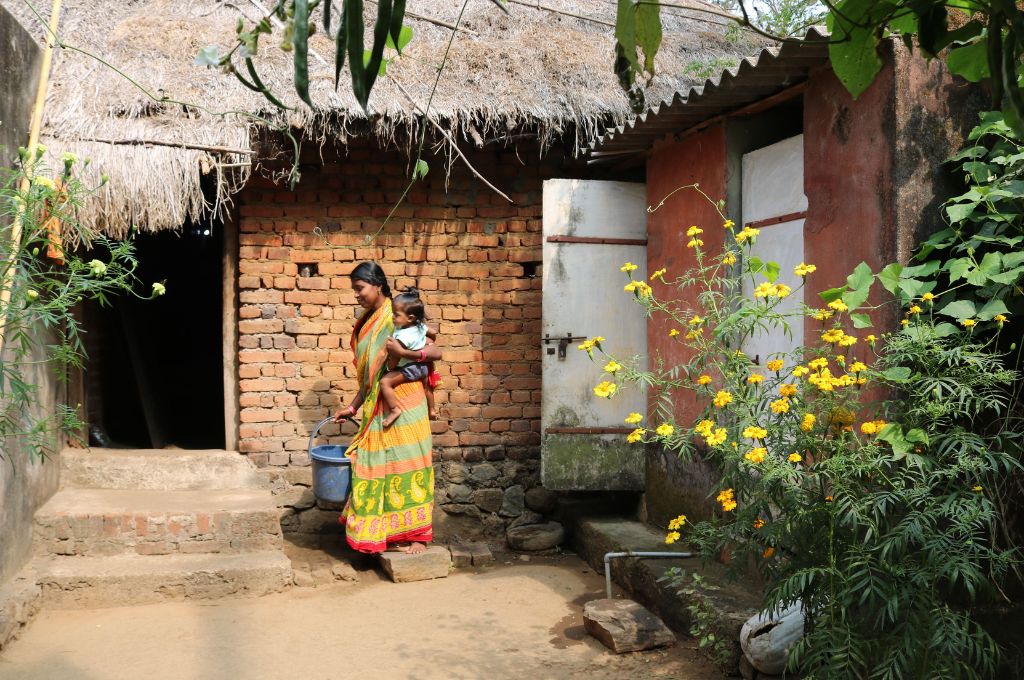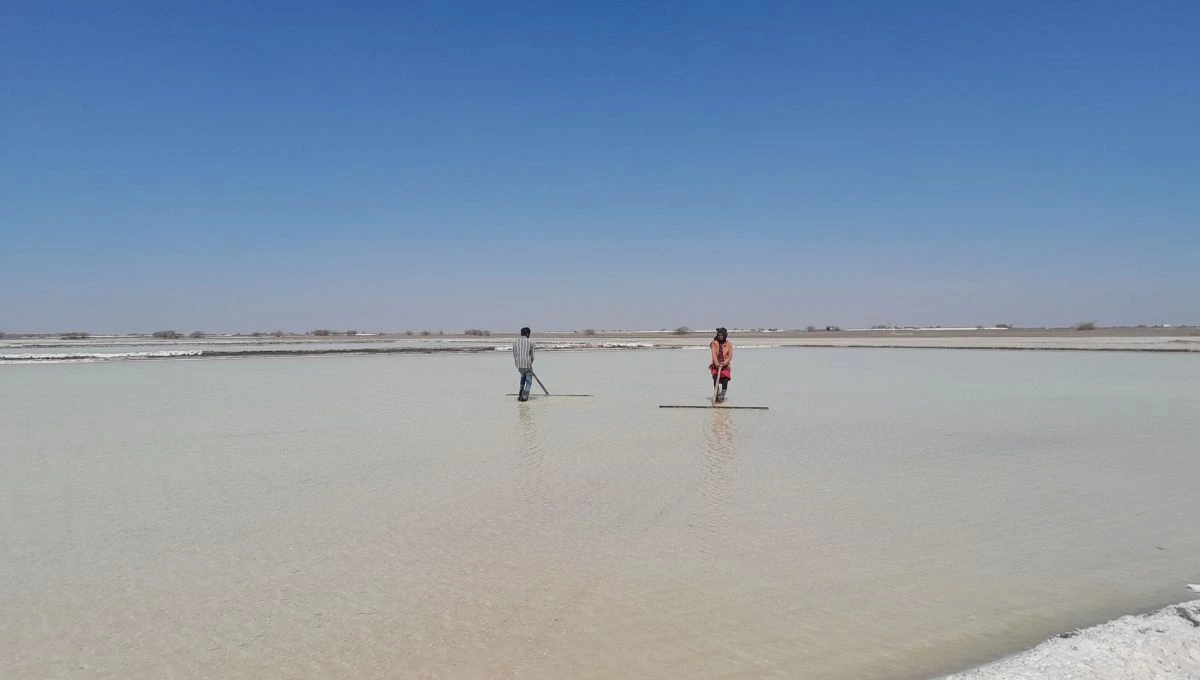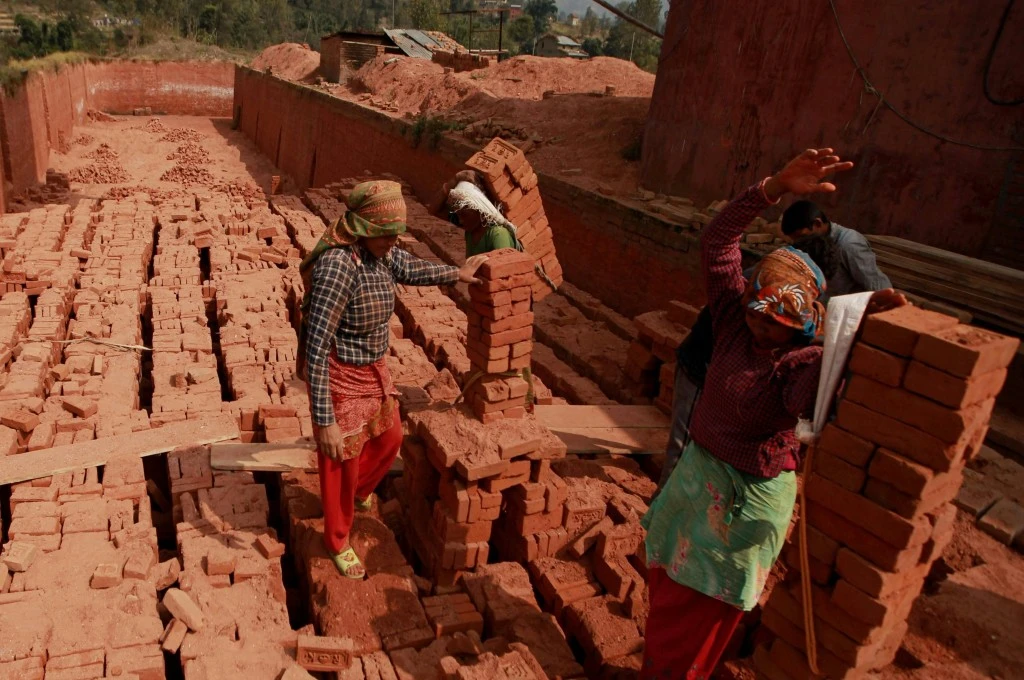By now, it is a well-known fact that the COVID-19 pandemic had a disproportionately negative impact on women. While multiple studies have examined this issue in depth, one of the areas left unexplored has been the impact of men’s reverse migration on women. During our work in rural India after the second wave of the pandemic, we found that many men across districts had permanently moved back home to their villages due to a lack of sufficient paid work opportunities in urban India.
Typically, the process of migration and the experiences of those who migrate have been seen through the lens of men, that is, men as migrants and women as passive companions. To move away from this narrative, we conducted a 1.5-year longitudinal study, keeping women at the centre. The study focuses on how men’s reverse migration post COVID-19 affected rural women’s incomes, their decision-making abilities, and their sociocultural lives. In this article, we present some of our preliminary findings of the baseline study1 conducted in Tikamgarh (MP) and Chitrakoot (UP) districts of the Bundelkhand region and Udaipur district in Rajasthan.
1. Increased unpaid work
Looking at the effect of reverse migration on women’s unpaid labour, we found that it increased across all districts. Here, unpaid work refers to a range of activities such as care responsibilities and travelling long distances to collect water and firewood, which are not remunerated. In fact, we found that in Udaipur the women in a typical household spent almost seven hours on unpaid work, which is substantially higher than Tikamgarh and Chitrakoot where women spent about 5–5.5 hours on unpaid work.

When asked whether the increased presence of men led to any changes in their workload, on average, 79.39 percent of women answered no, whereas 20.91 percent said yes. On probing deeper into possible explanations for these results, we found that while some believed household work had increased, others felt a sense of relief from having additional members present at home.
For some women, the number of hours they spent on childcare increased since schools were closed during the pandemic. With more mouths to feed, clothes to wash, and elderly/sick people to look after, their domestic responsibilities increased as well. Women also said that they now spent more time collecting water and fuelwood, which was physically and mentally straining.
However, a large percentage of women felt that their work reduced, due to shared responsibilities between them and their husbands. When the men would migrate, the women were responsible for taking care of both the fields and the home. In many cases, they had to carry out all agrarian activities, from seeding to riding tractors and picking up heavy loads. The men’s return, in a way, alleviated some of their stress and workload. The men took over much of the agricultural work, leaving the women to take care of unpaid work and farm animals. Additionally, men’s contribution towards caregiving and household work is often not spoken about. Our findings showed that a number of men took up childcare responsibilities after their return.
2. Reduced opportunities for paid work
The increase in women’s unpaid work directly impacted their participation in paid work. In Tikamgarh, 36.89 percent of the women surveyed reported that they had to leave paid work due to an increase in household responsibilities after their husbands returned. In Chitrakoot and Udaipur, 39.39 percent and 31.38 percent reported the same. Additionally, with the return of men to rural areas, employers now preferred hiring male workers. This was true not only for agricultural work but also for manual labour and shopkeeping, among others. The women, therefore, could not return to the occupations they previously worked in. Thus, despite working longer hours than their male counterparts—who now only worked in the fields—women did not receive the same recognition, financial or otherwise.

3. Less ownership and control over finances and assets
Several scholars have argued that the migration of men away from rural areas has increased women’s control over their finances and other productive resources. Our research shows that before the pandemic, women—to a certain extent—could choose to work in the fields, along with having some other freedoms. This is because men were not actively involved in productive tasks, as they were away working as migrants. Monetarily, however, in most cases men continued to make the decisions and, in some homes, both husband and wife were involved in decision-making. Thus, men migrating doesn’t automatically mean that women will have ownership over land and other productive resources.

Simultaneously, we attempted to look at whether women continued to enjoy increased access and power to make decisions over land, labour, and economic resources upon the return of men. When analysing whether women had access to finances, 96.95 percent in Chitrakoot, 92.07 percent in Tikamgarh, and 85.48 percent in Udaipur responded in the affirmative. However, on probing deeper to understand who actually manages the finances, it was revealed that regardless of the district, men owned and managed the finances. Across the districts, more than 71 percent of men selected themselves as the owners of financial resources, whereas only 35 percent of women voted for themselves. Among the male respondents, only 6 percent believed that their wives controlled the finances. In contrast, 50 percent of the women saw their husbands as controlling household finances.
After their return, husbands continued to exert dominance over land and related assets as well. Sixty-seven percent of men saw themselves as owners of the land, and only 3 percent selected their wives. When it came to female respondents, 50 percent chose their husbands, while 31 percent chose themselves. Similarly, only 1.52 percent of women across the districts enjoyed privileges over the land their families own. In comparison, 41 percent of men regained control. Further, the women now only undertook traditional forms of agriculture, that is, the seeding and cutting of crops, while the men worked in the fields using machines, and eventually sold the crops to the market. This shows that while women continue to work in the fields and have access to certain resources, this only sometimes translates to actual rights and bargaining power.
4. Increased familial restrictions
In rural India, it is not uncommon for limitations on women’s mobility to be put in place. For instance, some women have to observe purdah, many need to seek permission from elders to go out, and yet others cannot venture out without a male family member accompanying them. These restrictions further limit paid work opportunities since a woman’s role is seen as limited to the domestic sphere.As noted earlier, while the women worked in the fields when their husbands were away, upon their return, women were once again relegated to the private sphere. A significant percentage of women (32 percent) reported experiencing increased familial restrictions upon the return of men.
Brahmanical patriarchy also constrains women of all castes. In order to curb their sexuality and ensure caste purity, upper-caste women often face more stringent control when it comes to mobility. Similar restrictions usually don’t apply to women from Dalit or Bahujan backgrounds, many of whom work alongside men in public spaces. However, these women are more likely to face sexual harassment at the hands of upper-caste men.
Speaking to an upper-caste woman, we understood that upon the return of men, she experienced increased restrictions on mobility and reduced access to occupations. She voiced feeling envious of women belonging to other castes, as they enjoyed more freedom. For many upper-caste families, a working woman is a matter of shame and affects familial pride and status in society. Women, therefore, are expected to stay within the four walls of the house, engaging only in domestic chores. The effects of male migration on women cannot be generalised. Many women in our study found that it gave them an increased sense of independence and the confidence to do various kinds of work. It also helped challenge traditional gender roles and practices, especially in agriculture. However, these increased responsibilities meant less personal time for the women. All their time and energy was focused on looking after family members and ensuring that there is enough money. This explains why an even larger percentage of women were relieved when their husbands returned. Several women said that having their husbands at home improved both their physical and psychological well-being. The return of the men, therefore, was both limiting and liberating for the women.
—
Footnotes:
- This baseline study was conducted in collaboration with Datakosh Research Consultancy Private Limited and Self-Reliant Initiatives through Joint Action (SRIJAN).
—
Know more
- Understand why the feminisation of agriculture doesn’t necessarily mean social and economic empowerment for women.
- Read how the pandemic is likely to reverse women’s empowerment gains made in rural India.
- Learn more about how the reverse migration sparked by the 2020 lockdown led to a drop in the demand for women farm workers.






